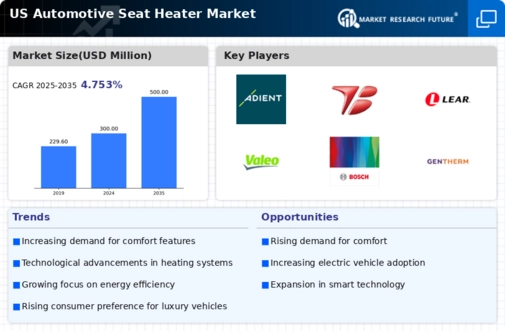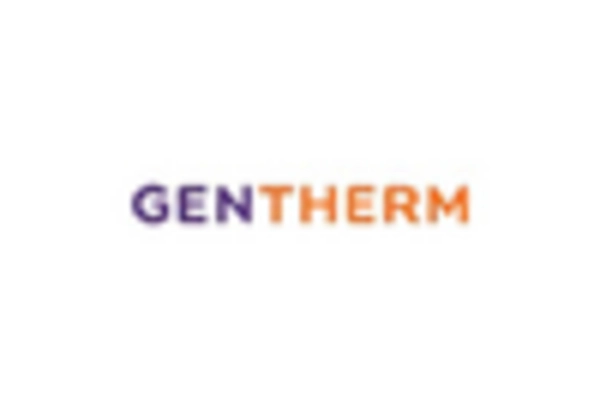Rising Demand for Comfort Features
The automotive seat-heater market experiences a notable surge in demand as consumers increasingly prioritize comfort features in vehicles. This trend is particularly pronounced in the US, where harsh winter conditions necessitate effective heating solutions. According to recent data, approximately 60% of consumers express a preference for vehicles equipped with heated seats, indicating a strong inclination towards enhanced comfort. As manufacturers respond to this consumer demand, the automotive seat-heater market is likely to witness significant growth, with projections suggesting a compound annual growth rate (CAGR) of around 8% over the next five years. This rising demand for comfort features not only enhances the driving experience but also influences purchasing decisions, making heated seats a sought-after option in the automotive sector.
Consumer Awareness of Health Benefits
Consumer awareness regarding the health benefits associated with heated seats is emerging as a significant driver for the automotive seat-heater market. Many consumers are becoming increasingly informed about how heated seats can alleviate discomfort, particularly for individuals with chronic pain or muscle stiffness. This awareness is likely to influence purchasing decisions, as consumers seek vehicles that offer therapeutic benefits. Research indicates that heated seats can improve blood circulation and provide relief from back pain, making them an attractive feature for health-conscious buyers. As the automotive industry continues to educate consumers about these advantages, the demand for heated seats is expected to rise, potentially leading to a market growth rate of around 7% over the next few years.
Increased Vehicle Production and Sales
The automotive seat-heater market is significantly influenced by the overall growth in vehicle production and sales in the US. Recent statistics indicate that vehicle sales have rebounded, with an increase of approximately 10% in the last year alone. This resurgence in the automotive sector directly correlates with a heightened demand for comfort features, including heated seats. As manufacturers aim to differentiate their offerings in a competitive market, the inclusion of seat heaters has become a standard feature in many new models. Consequently, the automotive seat-heater market is expected to benefit from this upward trend in vehicle production, with estimates suggesting a potential increase in market size by $500 million over the next few years. This growth is indicative of the broader consumer shift towards enhanced vehicle comfort and luxury.
Regulatory Standards and Safety Features
The automotive seat-heater market is also shaped by evolving regulatory standards and safety features. As vehicle safety regulations become more stringent, manufacturers are compelled to integrate advanced heating systems that comply with safety guidelines. This includes ensuring that seat heaters do not pose a risk of overheating or causing burns. Compliance with these regulations not only enhances consumer trust but also drives innovation within the market. The automotive industry is likely to see an increase in the adoption of safety features related to seat heating, such as automatic shut-off systems and temperature regulation mechanisms. As a result, the automotive seat-heater market is expected to grow, with projections indicating a potential increase in market value by 5% as manufacturers adapt to these regulatory changes.
Technological Advancements in Heating Systems
Technological advancements play a crucial role in shaping the automotive seat-heater market. Innovations such as more efficient heating elements and smart temperature control systems are becoming increasingly prevalent. These advancements not only improve the performance of seat heaters but also enhance energy efficiency, which is a growing concern among consumers. For instance, the integration of lightweight materials and advanced insulation techniques can reduce energy consumption by up to 20%. As manufacturers invest in research and development to create more sophisticated heating solutions, the automotive seat-heater market is poised for expansion. The incorporation of smart technology, such as app-controlled seat heaters, further aligns with consumer expectations for convenience and customization, potentially driving market growth in the coming years.

















Leave a Comment